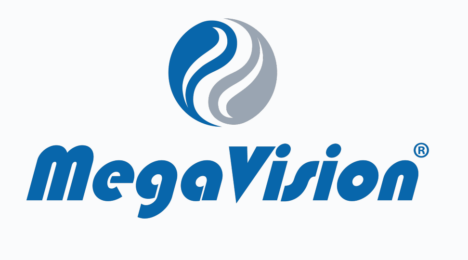Phosphorus recovery and reuse from wastewater (*WNWNW #1)

Simon Judd has over 35 years’ post-doctorate experience in all aspects of water and wastewater treatment technology, both in academic and industrial R&D. He has (co-)authored six book titles and over 200 peer-reviewed publications in water and wastewater treatment.
Waste Not Want Not Wednesdays #1: reclaiming phosphorus from wastewater streams in treatment plants*
In 1974, Isaac Asimov said 'Life can multiply until all the phosphorus has gone and then there is an inexorable halt which nothing can prevent'. Well, as it happens, it is the life-enhancing properties of phosphorus that have had such a devastating impact on environmental waters, causing widespread eutrophication which has all but wiped out higher marine life forms in some lakes and rivers. It is nonetheless a finite resource, and a vital one for horticultural applications. So, preserving what we have is becoming a priority.
Since the removal of phosphate from wastewater is critical for suppressing eutrophication of environmental waters, and it also has some value (about $170/ton for phosphate rock as of end 2024), its recovery from wastewater would seem to offer a win−win. Recovery from internal streams also benefits process operation, since struvite (magnesium ammonium phosphate, MgNH₄PO₄·6H₂O) − a common phosphate salt in wastewater − can otherwise precipitate as a hard and tenacious deposit on the internal walls of pipes and fittings.
Unwanted struvite precipitation in sludge processing operations is a widely recognised challenge in enhanced biological phosphorus removal (EBPR) plants. The EBPR process increases the sludge phosphate concentration. Any upward shift in pH, such as through CO2 stripping, or concentration increase, such as from sludge consolidation, increases the level of struvite supersaturation. Under such circumstances, purposefully precipitating this salt in a reactor to form a product which can subsequently be used as a fertiliser would seem obvious.
The alternative option for addressing the challenge posed by struvite − the use of antiscalants to suppress struvite formation − can also be implemented using proprietary chemicals such as RockAway. However, the increasing costs of phosphorus, combined with environmental legislation, is shifting the focus on recovery and reuse.
A number of commercial technologies exist for recovering phosphate from wastewater streams. These technologies typically involve the precipitation of phosphate, most often as struvite but also other phosphate compounds. As such they are only substantially effective for waters containing relatively high concentrations of phosphorus salts. They are therefore normally installed in sludge processing streams, often those downstream of anaerobic digestion, where P levels tend to be at their highest. Such streams include:
- the supernatant or filtrate from thickening of digested sludge by gravitation and filtration respectively
- the centrate or filtrate streams from dewatering of digested sludge by centrifugation and filtration respectively
- the leachate from fly ash or other solid products following sludge incineration or other oxygen-depleted thermochemical conversion processes (such as pyrolysis).
The last of these appears to be a more recent development − particularly as applied to the solid biochar product from pyrolysis, since sewage sludge pyrolysis remains in the early stages of implementation whereas sludge incineration is far more widespread.
There are a few commercial P recovery processes which have been successfully implemented at full scale at more than one wastewater treatment works. These all apply to sludge streams upstream of any thermochemical treatment operations. There are a few other commercial technologies that have been developed for P recovery from sewage sludge incineration ash. These include the AshDec® process, currently owned by the Finnish company Metso Outotec, which is a thermochemical separation method.
| Technology | Application | Reactor | First implemented | Product | Product form |
|---|---|---|---|---|---|
FBR - Fluidised bed reactor; CSTR - Continuous stirred tank reactor | |||||
| Crystalactor TM | Digester & thickener supernatants | FBR | 1988 | Struvite, CaP, MgP | Pellet |
| Ostara Pearl® | Digester & thickener supernatants | FBR | 2009 | Crystal Green® | Pellet |
| Multiform Harvest TM | Digester supernatant | FBR | 2010 | Struvite | Pellet |
| NuReSys® | Digestate, filtrate & centrate | CSTR | 2006 | Bio-Stru® | Pellet |
| PHOSPHAQ TM | Sludge liquors | CSTR | <2010 | Struvite | Pellet |
| MagPrex TM | Digestate | Air-lift | 2011 | Struvite | Grains |
In fact, the extent of implementation of the technologies on offer overall is unclear. According to the register of technologies on the EU platform (ESPP, 2025), there are more than 40 technologies that have either been commercialised or are under development. However, there is a wide range of TRLs (technology readiness level) amongst the listed technologies.
There also appear to be relatively few full-scale installations, based on publicly-available information − perhaps no more than 100 worldwide. In particular, it is unclear as to whether any of the incineration ash P recovery technologies have been implemented at full scale.
Given the importance of recovery and reuse generally, and of phosphorus in particular, what can be done to promote it? Well, the answer is usually legislation − possibly combined with subsidies. The EU recently revised the Urban Wastewater Treatment Directive (UWWTD) [UWWTD 2024], tightening discharge consents for N & P for WwTWs greater than 150,000 population equivalents by 2039. And in Paragraph 42, the recovery of P specifically is stipulated: In order to ensure the proper and safe recovery of nutrients, including the critical substance phosphorus, from sludge, a minimum combined reuse and recycling rate should be set at Union level. Member States should be able to choose whether to reuse or recycle, or both, urban wastewater or sludge, or both, in order to recover phosphorus.
The increasing stringency of EU legislation goes some way to explaining the plethora of P recovery technologies under development. But demonstrating overall sustainability, as anyone adept at performing life cycle assessments can attest, is not straightforward. Recovering P employs chemicals and/or energy which themselves incur an environmental footprint. Then there are the waste streams to consider. For example, heating the blended incineration ash and bicarbonate, as in the AshDec® process, generates a vapour containing volatile toxic metals such as cadmium and mercury. Then there is the economics. The value of the recovered phosphorus is not necessarily high enough to provide an acceptable payback period.
Notwithstanding the challenges, phosphate recovery for reuse is likely to become more widespread in the future for larger WwTWs and/or sites where sewage sludge is imported for processing. P recovery processes incur additional capital costs and impose practical challenges, and are unlikely to be viable for smaller plants or sludges with minimal phosphate levels. But phosphorus is essentially a resource that needs to be harnessed. The alternative of doing nothing is pretty unpalatable − particularly for the fish.









